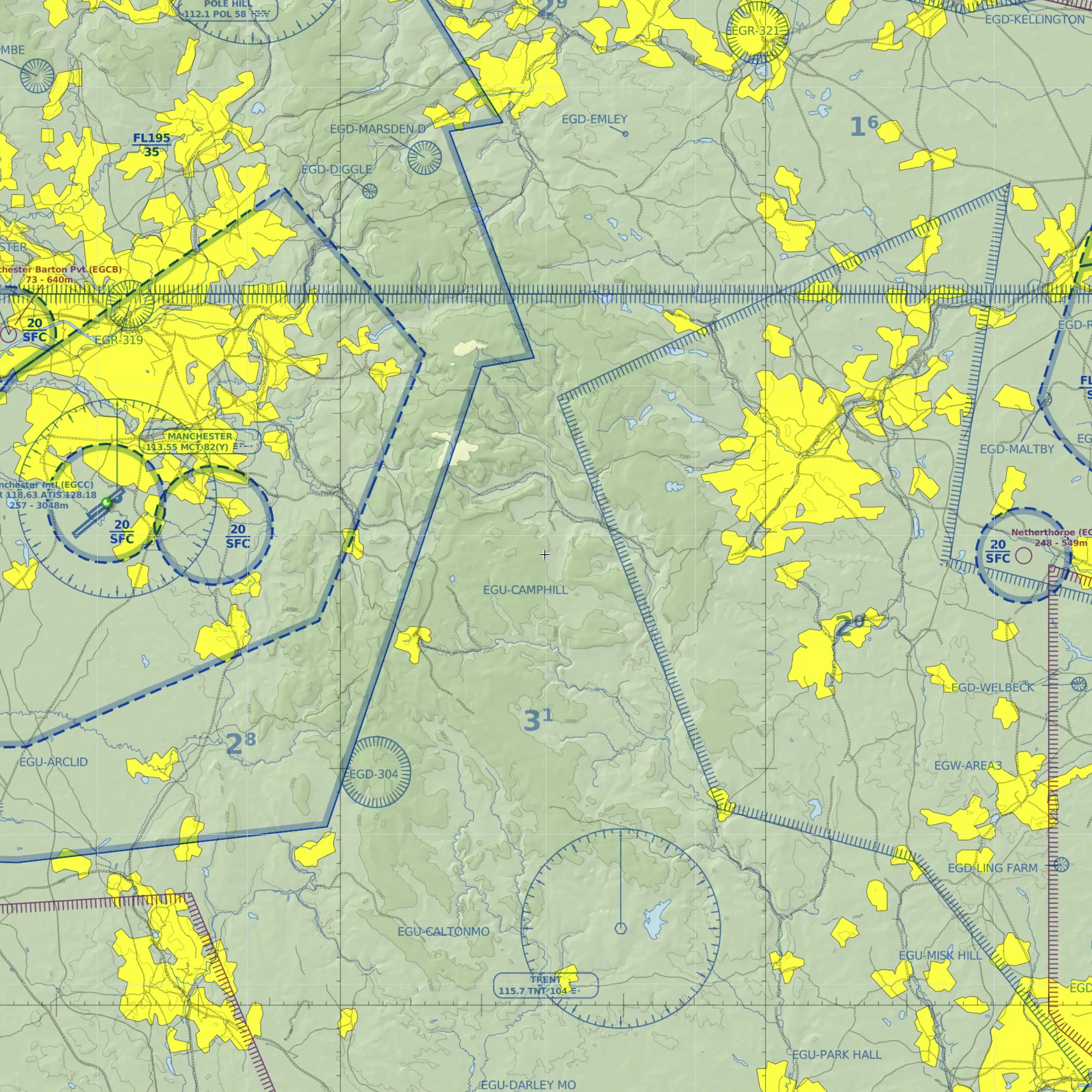Hang gliding & paragliding at Bradwell Edge
Any pilot visiting or intending to fly in Derbyshire should make themselves aware of the gliding club at Camphill airfield and the type of flying activities they are likely to encounter.
In more recent times, hang gliders and paragliders have seen the opportunities Bradwell Edge can offer in westerlies and on these occasions launch from open ground just north of the airfield. These guidelines have been produced to provide hang glider and paraglider pilots with information on the likely set up at Camphill airfield when westerly wind conditions occur, including information on launch and circuit patterns likely to be adopted by the gliding club on such days.
During periods when good soaring conditions are likely, the number of gliders operating from the airfield can expand to over 50, with the influx of visitors and pilots from other clubs.

WARNING
In addition to solo flying by club members and visitors, more than half of all flights on any day are training flights in two-seater gliders; where instructors (located in the rear seat of a glider) coach, train or test club members and visitors (located in the front seat of the glider).
So, HG and PG pilots should be aware that although the trainee in the front seat of a training glider may have a good all-round view of activities going on in front and to the sides of the glider, the instructor in the rear will have a more limited view.
Winch Launching
At Camphill airfield, gliders are launched to a variety of heights, using high powered winches. These winches are mobile and are generally located on any flying day at the upwind end of the airfield, to provide glider pilots with a safe launch to the maximum height possible on the day.
Winch launching east to west
If the west wind is strong enough to sustain a glider whilst soaring along the line of the ridge, launching will take place from the east side of the airfield, with the winch launch vehicles located near the windsock. Gliders will be launched to a height of around 300ft – 800ft above the airfield, joining the ridge at this point.
On occasions, perhaps 2 or 3 per day, simulated launch failure exercises will be flown to test or train pilots. Here gliders will join the ridge at any height, before attempting to contact ridge lift and start climbing away.
WARNING
It is clear therefore that any HG or PG flying along the west side of the airfield when glider launches are taking place, could be placing themselves in danger of meeting a glider flying at 90° to the ridge, at speed, from either a launch or a launch failure (real or simulated).
Circuits & landings at Camphill
Regardless of the position of the winch launch vehicles & launch point, in west wind conditions glider pilots will usually land towards the west, into wind.
There are a number of circuits a pilot could adopt in these conditions, some of which are shown below. However, please be aware that these do not cover all landing options flown by DLGC pilots, or those flown by two-seater training gliders.
Those under training or those being tested will be regularly placed in challenging locations in and outside of a normal circuit, to test their skills. This will mean that not all gliders landing at Camphill will follow a set pattern.
Pilots are regularly trained and tested to cope with situations in circuit when things could go wrong; out of position – too low, too high, too close or too far away!
Most glider pilots who have chosen to land towards the west will fly over or close to the gulley (Deadman’s Clough) at heights between 400ft – 800ft, at speeds ranging from 45kts to 70kts (50 – 80mph).
The aim, to position the glider on the east, downwind side of the airfield, at a height of no less than 300ft (higher in strong winds) for a straight-in approach at between 50–70kts.
HG & PG pilots should be aware that when a glider is flying the down-wind leg of a west wind circuit, the ground speed of the glider will be its flying speed plus that of the speed of any tail-wind, so gliders flying east over or close to the gulley (Deadman’s Clough) are likely to be doing so with a ground speed of between 60 – 90mph.
Encountering a hang glider or paraglider at that point could be very challenging for even the most experienced pilot, so HG and PG pilots are strongly advised to follow the ‘Rules of the Air’, the ‘Skyway Code’ & ‘SERA’ and NOT ATTEMPT to fly through or endeavour to climb in the airfield’s circuit: such actions could have deadly consequences.